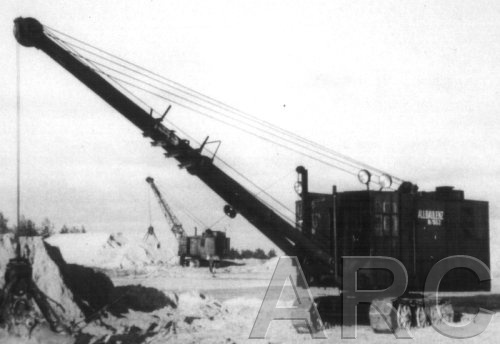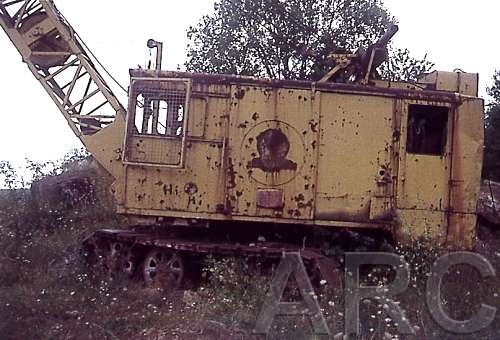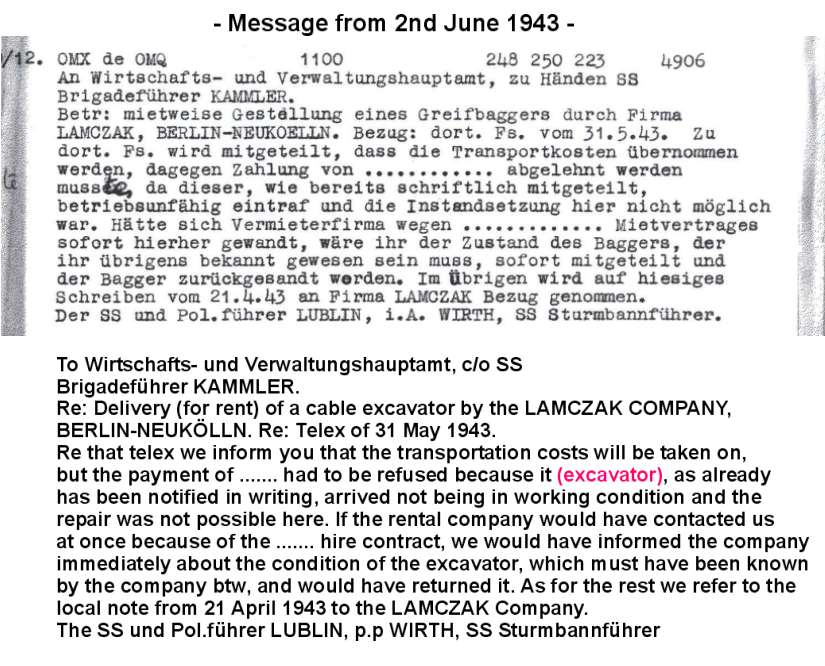For digging the huge burial pits in the
Aktion Reinhard death camps the Nazis used big excavators.
The only photos of death camp excavators were taken by Treblinka camp commander
Kurt Franz.
The photos were found in his Treblinka album "
Schöne Zeiten" (Pleasant Times).
In Belzec and Sobibor excavators surely were used also for the same purpose.
ARC is the only website which can show
all photos of the use of excavators at the Treblinka camp site.
At least two types of excavators were used in Treblinka:
Menck & Hambrock Ma
Menck & Hambrock type "Ma", produced between 1933 and 1944. Power: 70 H.P.,
weight: 27 tons.
 |
| Menck & Hambrock Ma |
The inscription "Allbalenz" means:
"All" =
Allgemeine (general)
"Ba" =
Baugesellschaft (construction company)
"Lenz" =
Lenz AG Berlin (Lenz Limited Company, Berlin)
Obviously this excavator belonged to the
Lenz Comp. in Berlin, hired by
Aktion Reinhard.
Only a few of the
M&H Ma-type excavators are still existing worldwide.
A good impression of this type you can get with this photo, by courtesy
of
bagger-und-bahnen.de:
 |
| Menck & Hambrock Ma in 2002 |
Menck & Hambrock Mb
Menck & Hambrock type "Mb", produced between 1933 and 1945. Power: 107 H.P., weight: 37-39.8 tons.
 |
| Menck & Hambrock Mb |
The logo of
Menck & Hambrock Company is visible on the excavator. ARC included the colour logo to
give you a certain impression of the appearance at that time. An even better impression you will get by
this recent photo of a
M&H Mb-type excavator which has been junked meanwhile
(by courtesy of
bagger-und-bahnen.de)
 |
| Menck & Hambrock Mb |
On 4 September 1942
Globocnik sent a telegram to
SS-Untersturmführer
Hans Offermann in which he ordered two excavators, perhaps for Belzec.
According to the Franz album photos the SS used cable excavators in Treblinka, not bucket excavators.
Maybe
Globocnik could not get the two Dutch machines and choosed other types.
Perhaps he realized later that bucket excavators were not useful for digging the burial pits. Who knows for what
else he could have ordered these excavators.
Offermann was part of the Lublin
Personalabteilung (personnel department),
so perhaps
Globocnik sent him to Holland to look for earth moving equipment.
Source: Public Records Office, Kew (England)
Leiden, Rapenburg 6
© ARC 2005













